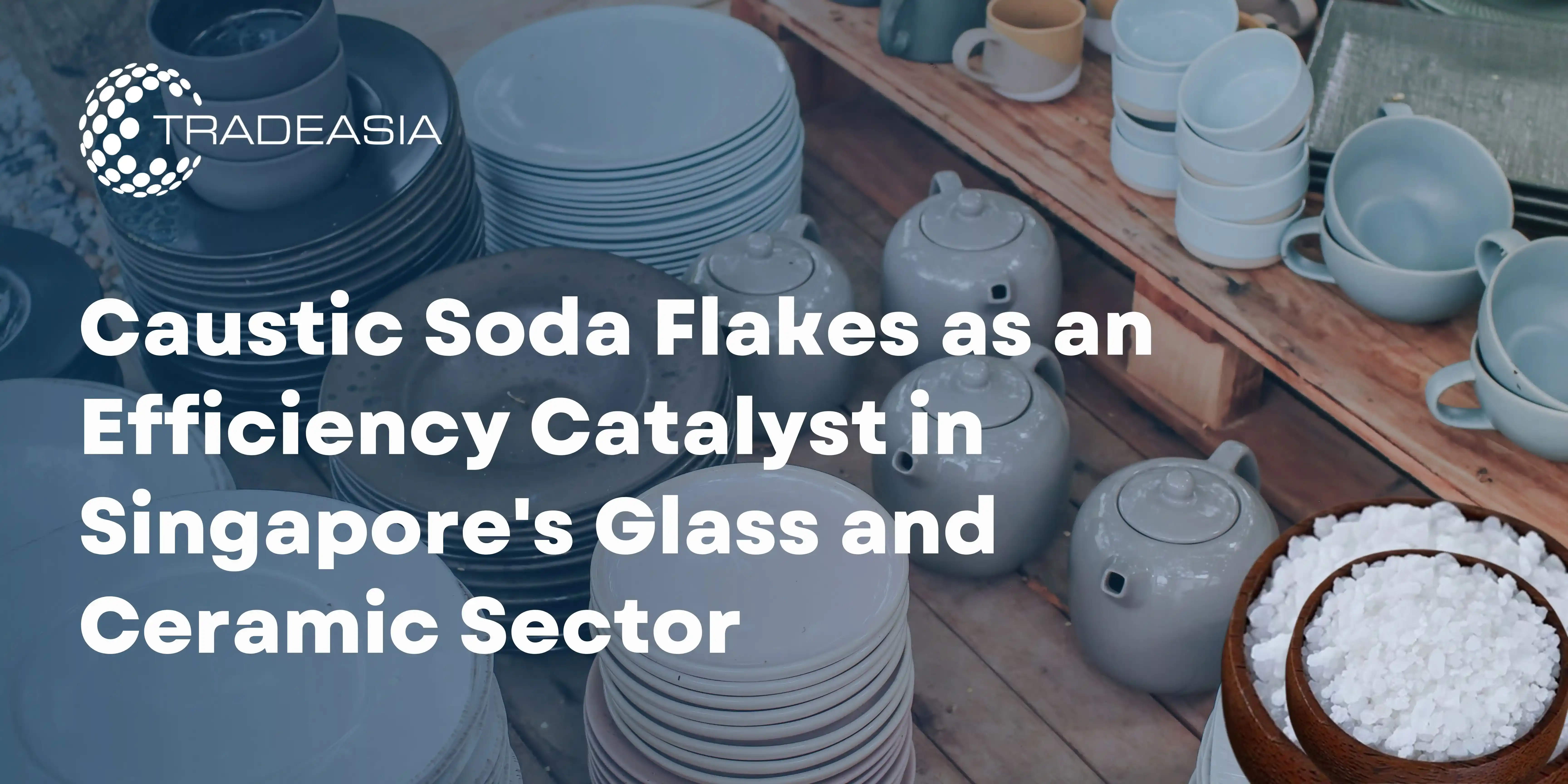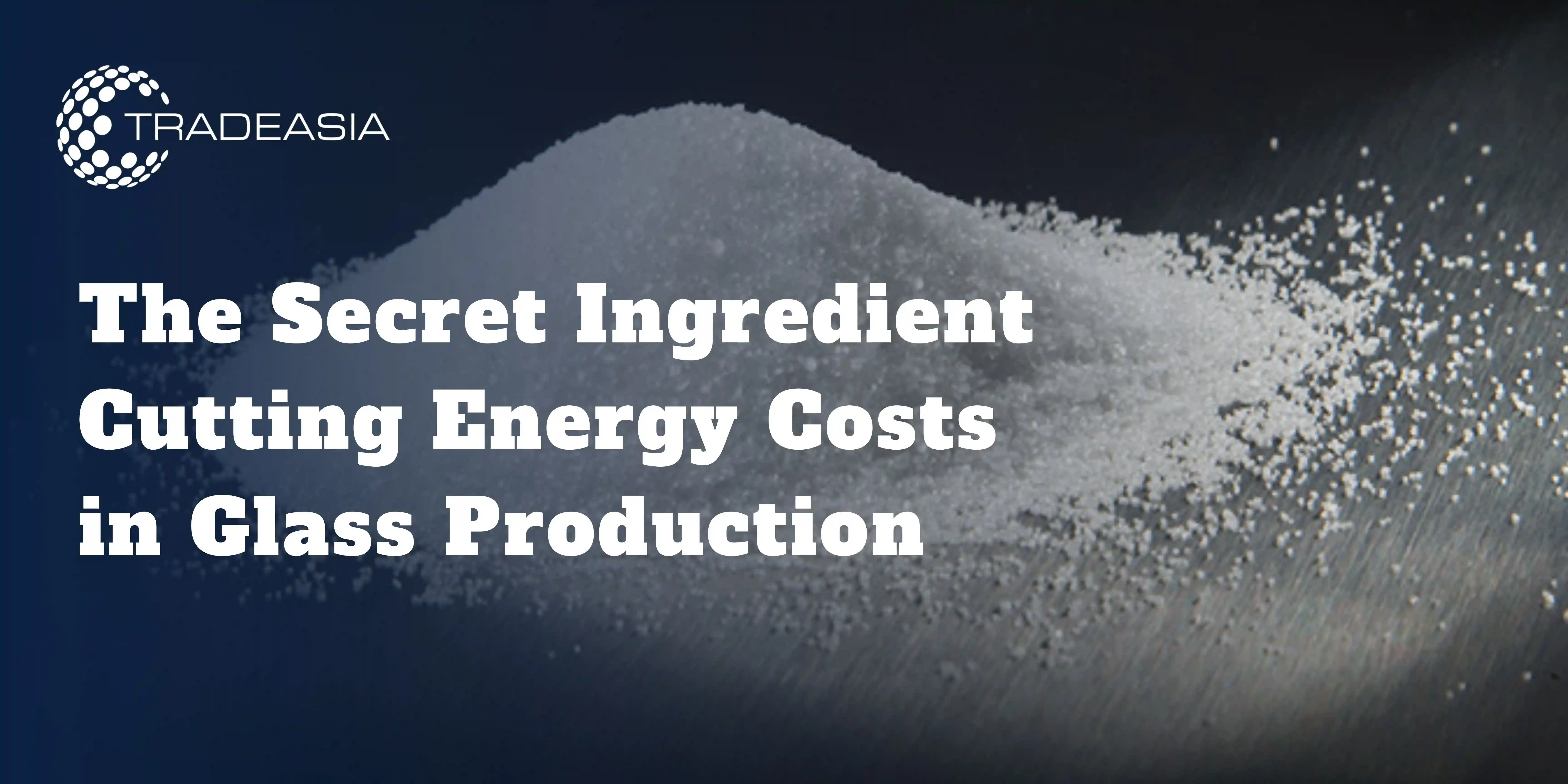Introduction to Sodium Sulphate Anhydrous in Glassmaking
Sodium sulfate anhydrous (Na₂SO₄), commonly known as salt cake, is a white crystalline salt widely used in modern glass production. A principal function is to act as a fining agent, facilitating removal of gas bubbles during melting and improving overall glass clarity. It also aids in fluxing, lowering the melting temperature of silica and soda ash constituents.
In Singapore’s float-glass and container glass manufacturing sector, sodium sulfate enhances melt homogeneity and reduces energy consumption. As glass producers target stringent quality targets alongside carbon-emission goals, Na₂SO₄ becomes a multifunctional additive that increases efficiency while maintaining cost-effectiveness.
Beyond its primary roles, sodium sulfate anhydrous also contributes significantly to reducing scum formation, foam, and surface imperfections that can occur during the glass melting process. By promoting a cleaner melt environment, it helps maintain the aesthetic and structural quality of the final glass product. In high-precision applications such as architectural glass or automotive windshields, even minor defects can result in product rejection making the fining capability of Na₂SO₄ even more critical. Additionally, its stable thermal behavior under high-temperature conditions ensures consistent batch performance, which supports automation and process predictability in modern glass furnaces.
Chemical & Physical Roles in the Glass Batch
When added to a glass batch, sodium sulfate decomposes at melting temperatures (~1500 °C), releasing oxygen and sulfur dioxide gases that help remove entrapped bubbles. This gas-driven “bubble flotation” is part of the fining process, improving visual clarity and structural integrity of the final product.
Moreover, sodium sulfate contributes Na₂O and SO₃ components essential fluxing agents that reduce melting point and viscosity of the molten glass. This accelerates melting rates, stabilizes furnace operation, and supports higher throughput with better uniformity.
In addition to its fining and fluxing capabilities, sodium sulfate also plays a stabilizing role in the overall chemical equilibrium of the batch. By interacting with other raw materials such as silica, soda ash, and dolomite, it helps regulate the oxidation-reduction balance within the melt. This control is essential to preventing undesirable color shifts or chemical inhomogeneity in the glass matrix. Furthermore, the evolution of gases during decomposition assists in refining the melt without introducing external contaminants, making sodium sulfate a preferred additive in high-purity glass formulations used in electronics, optics, and pharmaceutical packaging.
Energy Efficiency & Production Optimization
By lowering melting temperature and improving melt homogeneity, sodium sulfate reduces energy consumption by 8–15%, enabling glass plants to produce more volume with less fuel input. This is particularly valuable for energy-intensive float-glass furnaces common in Southeast Asia.
In addition, improved fining reduces defects and reworking rare bubbles or seeds that affect clarity are significantly minimized. By enhancing quality at the batch level, manufacturers in Singapore can reduce waste and maximize yield per furnace charge. Sodium sulfate supports longer furnace campaign lifespans by promoting a more stable and uniform thermal profile during operation. This stability minimizes thermal shocks and refractory wear, ultimately lowering maintenance frequency and unplanned downtimes. For manufacturers operating in highly competitive export markets, these cumulative efficiencies contribute not only to reduced operational costs but also to improved scheduling and product consistency. As sustainability standards tighten globally, such additive-driven optimizations offer a strategic edge in meeting both economic and environmental performance goals.
Impact on Glass Quality & Clarity
Sodium sulfate helps achieve uniform glass with fewer inclusions and lower haze, crucial for architectural, container, and float glass applications. Its controlled release of gas at peak temperatures promotes dissolution of microbubbles and deoxidation of iron species, resulting in superior optical clarity.
Furthermore, sodium sulfate’s surface-active properties reduce surface tension between bubbles and melt, enabling rapid bubble coalescence and escape; this results in smoother, more homogeneous glass surfaces and fewer visual defects.
This improvement in visual and structural quality directly benefits high-spec applications where aesthetic and mechanical precision are critical, such as low-iron glass for solar panels or premium architectural glazing. In such products, even minor imperfections can lead to significant performance degradation or customer rejection. By consistently enhancing the purity and uniformity of the melt, sodium sulfate enables manufacturers in Singapore to meet strict international standards and cater to niche markets that demand flawless transparency, high light transmittance, and minimal optical distortion.
Industrial Application in Singapore
Glass producers such as those serving Singapore’s demand for architectural flat glass and containers benefit from sodium sulfate anhydrous as an essential batch additive. Addition rates typically range between 1–5% of total alkali to balance fining and melt behavior tailored to specific furnace and batch chemistry.
Singapore’s strict environmental regulations and energy cost structure make sodium sulfate an ideal tool for mills looking to improve efficiency without compromise. The compound’s thermal and chemical stability ensures consistent performance in continuous melting setups, while maintaining regulatory compliance.
In Singapore’s tightly optimized manufacturing environments, sodium sulfate also aligns with industry efforts toward digitalized, precision-controlled glass production. By integrating real-time monitoring systems, glassmakers can fine-tune sodium sulfate dosing to maximize fining efficiency while minimizing chemical waste and emissions. This adaptability is especially important for local producers supplying high-grade float glass for green buildings and export-grade containers, where uniformity and compliance with environmental certifications such as Singapore Green Mark are key competitive advantages.
Sustainability and Safety Profile
Sodium sulfate anhydrous is generally non-toxic and environmentally benign. Unlike sulfur-containing fining agents that emit SOₓ, Na₂SO₄ decomposes under high temperature and aids gas release within the melt, resulting in minimal gas emissions and cleaner operations aligned with Singapore’s industrial environmental goals.
Its cost-effectiveness and ease of handling further reduce overall operational risk. Sodium sulfate is compatible with standard glass batch blending systems and requires minimal additional safety measures beyond standard inorganic powder handling procedures.
Additionally, sodium sulfate supports sustainable glass manufacturing by contributing to circular production models. It allows for higher cullet (recycled glass) content in the batch by improving melt kinetics and fining quality, thereby reducing reliance on virgin raw materials and lowering carbon footprint. For Singapore-based operations that prioritize green production and resource efficiency, this additive offers both technical and environmental advantages making it a preferred choice in long-term sustainability planning.
Comparison with Alternative Fining Agents
Alternative fining agents such as sodium chloride, sodium nitrate, and boron compounds offer varying performance but can introduce unwanted gas release, altered melt chemistry, or cost inefficiencies. Sodium sulfate strikes a balanced compromise: effective fining, fluxing action, low cost, and compatibility with existing soda-lime-silica glass formulations.
Its dual role fluxing and fining reduces need for multiple additives and simplifies formulation logistics in industrial batch kitchens. This is especially beneficial for glassmakers in Singapore looking to optimize sourcing, storage, and melt control without additional chemistry complexity.
This efficiency in formulation also translates to operational consistency across different furnace types and production lines. Sodium sulfate’s predictable thermal behavior and solubility ensure stable integration into automated batching systems minimizing dosing errors and reducing batch-to-batch variation. Moreover, its broad availability in the Asia-Pacific region, including Singapore, enhances procurement reliability and lowers supply chain risks. For manufacturers aiming to scale production while maintaining quality and compliance, sodium sulfate remains a strategic, cost-effective component in modern glassmaking
Conclusion
Sodium sulfate anhydrous is more than a supplementary additive it is a critical enabler of efficient, sustainable, and high-clarity glass production. In Singapore’s competitive manufacturing environment, where energy efficiency, environmental responsibility, and product quality are paramount, Na₂SO₄ offers a well-balanced solution. Its dual function as a fluxing and fining agent enhances melt kinetics, promotes gas removal, and reduces defects, resulting in superior optical clarity and smoother surfaces for both flat and container glass.
Moreover, sodium sulfate aligns seamlessly with Singapore’s stringent environmental standards, thanks to its low emissions profile and non-toxic nature. Its availability, ease of integration into existing batch systems, and cost-effectiveness make it a valuable asset for producers aiming to streamline operations without compromising quality. As the glass industry continues to pursue innovation and sustainability, sodium sulfate anhydrous remains a strategic material essential not only for glass clarity but also for future-proof, compliant manufacturing practices in Singapore and beyond. For more information about the availability of sodium sulfate anhydrous and customized supply solutions for your glass manufacturing needs in Singapore, please reach out to us through Tradeasia’s official contact page.
Referensi


Leave a Comment